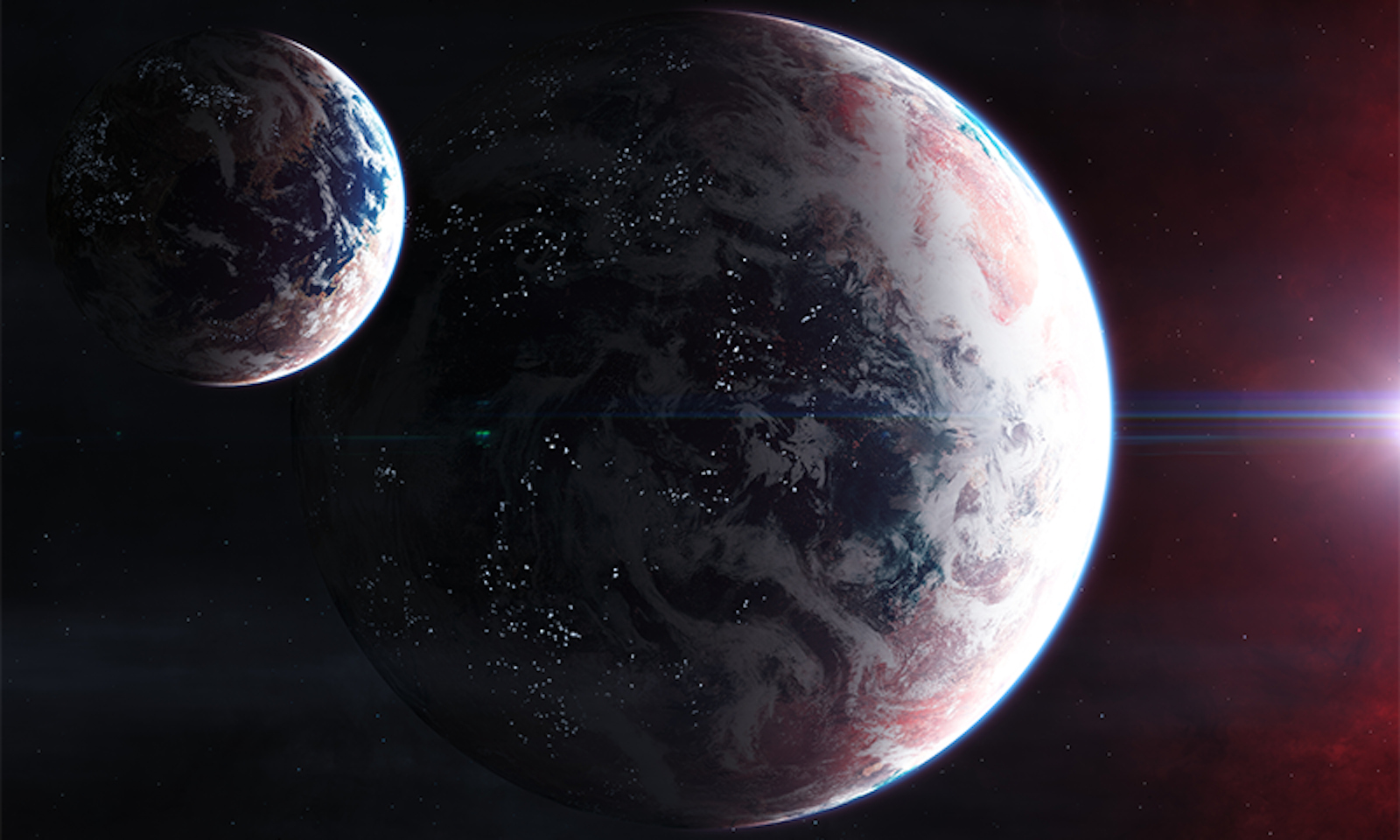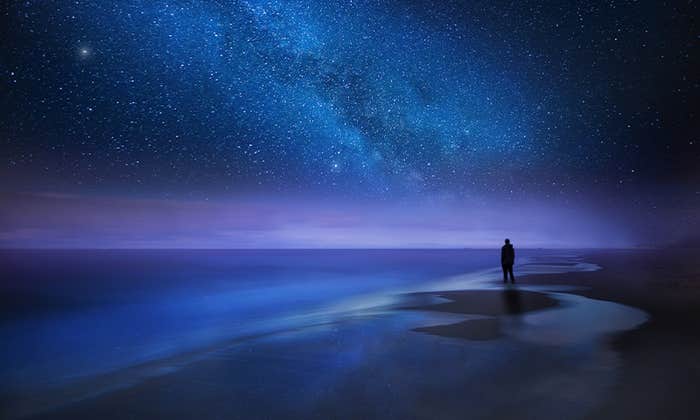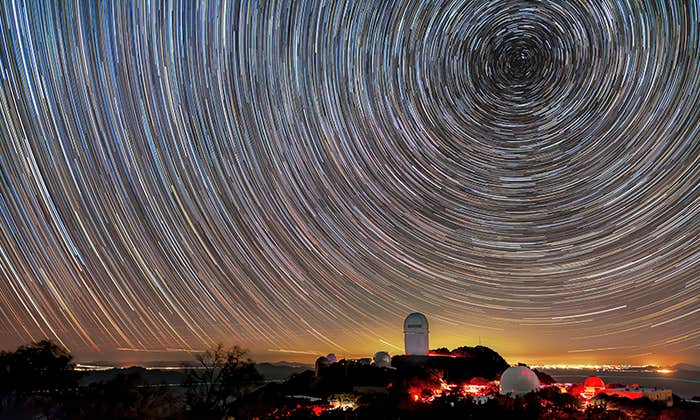Yes, you can get bad coffee in Vienna. Vienna is known for its beautiful cafés, where philosophers, poets, and scientists have found inspiration over endless cups of fantastic coffee for hundreds of years. Coffee is still at the heart of Viennese culture; the café is an extension of your living room, a place to meet friends or just read.
But there I was, at a conference center in Vienna for the 2012 meeting of the European Geological Union, one of about 11,000 scientists struggling to find a cup of coffee during the 20-minute coffee break. I am not a geologist, but I was invited to give a talk on the link between exoplanets and our own planet, a critical connection I’d pioneered.
The coffee in the conference center was free for attendees, but as I looked at the brownish-grayish liquid in the white plastic cup in my hand, I wondered how I could have forgotten to pick up a cup of coffee on my way.
Suddenly, my research to find life in the cosmos went from visionary to practical.
As I stood in the vast hall filled with poster displays, pondering the unfairness of life, I heard steps echoing along the corridor. I was pretty much alone because by the time I got through the incredibly long coffee line, the next conference session had already started. When you enter a room late, it feels like everyone speculates about the reason for your late arrival, so I’d decided to look at the posters of new scientific work instead.
The echoing footsteps indicated that another person had decided to make a foray into the empty poster hall. And it was someone I knew.
William Borucki, an American astronomer working at the NASA Ames Research Center, is a giant in my field—someone who managed, against all odds, to get the NASA Kepler space telescope launched. By against all odds, I mean that he proposed the Kepler mission and got rejected by NASA four separate times.
But Borucki just did not give up.
He knew he had an important mission that could find out how many planets circle other stars. Kepler was designed to look repeatedly at the same region of sky, searching more than 150,000 stars at the same time for the tiny brightness changes that revealed their planets. Borucki kept a small team of a dozen scientists motivated, proposing again and again until finally, after thousands of written pages and ever-more-sophisticated experiments to show that the technology would work, the next time was the charm. The astonishing Kepler mission, with its 55-inch mirror, found thousands of worlds circling other stars and rewrote our understanding of planets.
Borucki is also one of the nicest people you could ever know. We had met before, at a small astronomy conference where I presented my work on how to figure out if a planet could be habitable. But since the Kepler mission launched in 2009, he had constantly been surrounded by people, all curious for the latest news from Kepler, so I did not expect him to remember me. Surprisingly, when he saw me, he smiled and headed over. I remember thinking that maybe he wanted to know where I’d gotten the hard-earned coffee I was holding. I debated whether I could recommend it.
That cold day in Vienna with terrible coffee turned into one of the most exciting days of my life. Borucki told me he’d planned to find me at my talk the next day. During our serendipitous encounter, he shared an intriguing—and well-kept—secret that I really, really wanted to shout from the rooftops of this beautiful imperial city: The Kepler mission had found a new world that was just in the right spot around its star.
Actually, not just one new world. The mission had found two small rocky exoplanets in the “Goldilocks zone” of the star Kepler-62, at a location where liquid water could be possible. Borucki asked if I could look at the data and tell him what I thought—could these planets be habitable?
When I dedicated my career to the question of how to identify habitable worlds by modeling their light fingerprints, no one knew when the first ones would be detected and if it would happen in my lifetime.
Just like that, in a quiet poster room in Vienna, I became part of the discovery of two of the most exciting exoplanets, Kepler-62 e and Kepler-62 f. I felt like the world stood still for a beautiful moment, and then a new worldview snapped into place, containing real worlds that just might be like ours.
I had bet that rocky planets in the habitable zone existed. And now, I’d won that bet.
Today, we know that there are most likely billions of rocky planets circling their stars at just the right distance for life, not too hot and not too cold. But before Kepler-62, although astronomers had found planets in Goldilocks zones, they’d done it a different way, using the wobble technique, which gave them an idea of the mass of the planet but did not let them distinguish between rocky planets like Earth and uninhabitable small gas balls like Neptune. Scientists believed that warm, rocky planets like Earth existed, but it was by no means a certainty.
The astronomers involved in the Kepler mission discovered the two worlds circling Kepler-62 via the transit method instead. When a planet travels across our line of sight, it alters the amount of the bright stellar surface we can see. By observing the decreases in the star’s light, we can determine a planet’s size. Any planet for which we know both the mass and the radius is a rocky world if it is smaller than about two Earth radii. Kepler-62 e and Kepler-62 f were such small planets.
Two rocky, temperate worlds were circling another star, news that everyone hoping to find life on other worlds had been sitting on the edges of their chairs waiting to hear. And suddenly, my research to find life in the cosmos went from visionary to practical, from far-fetched to applied, from future-oriented to needed-right-now. That is why Borucki wanted to talk to me—because I had worked on the question of how to find life on exoplanets, before we had any planets to search.
Are we alone in the universe? And if not, how do we find other life forms? To me, these are two of the most intriguing questions in science. But when I began exploring them in the late 1990s, no one knew if other habitable planets existed, and several senior scientists strongly suggested that I should change my misguided research topic. In fact, they told me this more than once—maybe they thought I was hard of hearing. They kept asking why I was working on something I might never find. Scientists throughout history must have always been asked questions like this. Over the years, I got good at offering the skeptics a strained smile and saying nothing.
I had prepared for finding rocky worlds like ours by developing a computer model, a bit like the climate models that predict the weather, to figure out how life might change a planet’s atmosphere. How would signs of life on worlds under different suns look to our telescopes?
My models are complex mathematical constructs based on Earth’s data and history; they give insights into the evolution of rocky planets like ours and extrapolate it to rocky worlds circling other stars. This was why I had been invited to give a talk at a meeting of 11,000 geologists. Based on all available scientific information, I had bet that rocky planets in the habitable zone existed, but that was what it was: a bet, based on an educated guess.
And now, just like that, I’d won this bet.
Now we had all done it. We had found the first potential Earths out there. Borucki, who would not give up; the scientists and engineers designing and building the Kepler mission; the public that supports scientific quests; and every dreamer who had ever looked up at the stars and wondered—it had taken all of us to get here, to find the first new worlds that could be just like ours.
Later that day, savoring the rich taste of coffee with perfectly steamed milk, my kleines Schalerl Gold (small cup of gold), at one of the oldest cafés in Vienna, I imagined what these worlds might be like. Using the café’s shaky internet, I connected with my computer back at Harvard and started the model runs to figure out if these planets—if they really existed—could provide warm enough surface temperatures for liquid water and to determine how we could explore these two planets with our telescopes. At this moment, in my mind, I saw two worlds covered in endless oceans and waves that never broke onto a shore. Or maybe there’d be some tiny islands here and there. Would the wind carry the smell of salt from the oceans as it does on Earth? Would there be someone or something feeling that wind on their skin?
The first results arrived early the next morning, and after double- and triple-checking them, I emailed Borucki the exciting news: The two new worlds were just right, two beacons of light on our path to finding other Earths in the cosmos. But—and there is always a but in science—the discovery still needed to be scrutinized. It could turn out that the planets we’d thought we’d found were not really there, that errors in the measurements or some mechanical issue had altered the data.
That is how we do science: We find something, then we challenge every aspect of it to ensure we’re not seeing something we want to see rather than what is actually there. Every scientist knows the drill. This scientific method lets you distinguish what is there and what is not, step by occasionally painful step. Often you disprove theories you have worked on for years. Theories that would have made the front pages of newspapers worldwide—if they had been proven.
Would the wind carry the smell of salt from the oceans as it does on Earth?
This ongoing vetting is why Borucki did not tell the world about the discovery yet. We needed to be sure that the planets were real. We ran test after test to see if the data held up.
From that shiny day on, I knew every ping of my email could signal doom. That was exactly how it felt. I wanted to look at the message, and I also really did not want to. I knew that if it turned out that these signals had resulted from an error in an instrument, I wouldn’t actually be losing these planets; they would never have existed in the first place. But I had already formed a strong connection to the first two worlds that could be like ours. And ping by ping, dreaded email by dreaded email, my planets survived—at just the right distance to keep them cozy.
The star Kepler-62 is a bit cooler and smaller than the sun. You can find it in the constellation Lyra, about 1,200 light-years from Earth. Kepler-62 e is the fourth planet from the star and circles it every 122 days. It is roughly 60 percent larger than Earth. The outermost planet of the five circling Kepler-62, Kepler-62 f, circles its star in 267 days. It is roughly 40 percent larger than Earth. Such planets are called super-Earths.
What might super-Earths be like?
We don’t have one of those in our solar system; Earth is the largest rocky planet here. Super-Earths could keep more of their water because of their greater mass and gravitational pull, so the entire surfaces of these planets might be covered with deep oceans. They could be some of the best surfing spots in the cosmos. Sci-fi films have introduced visions of ocean worlds; Kevin Costner’s famously expensive 1995 movie Waterworld, for instance, depicts a future Earth where all ice caps have melted, submerging the landmasses. While movies provide beautiful visuals of ocean worlds, in reality, deep oceans would create much weirder worlds. The deeper you dive in an ocean, the more pressure builds around you. When oceans are deep enough, at a certain point, the pressure becomes so high that the water turns solid. The bottoms of these oceans would be ice. Not the cold ice we see in winter on a freezing day, floating on top of the water, but much denser, warm ice created by the immense pressure of the ocean above it.
Imagining life on other planets is pure speculation for now. But there is no compelling reason why life could not exist on ocean worlds, whether liquid water covers the surface or thick ice sheets hide it, like on moons Enceladus and Europa.
Maybe, instead of starting in shallow ponds on a rocky surface—the current popular theory for the origin of living things on Earth—life could begin in a shallow pond on an ice shelf. I vividly remember sitting in my campus office with papers strewn all over the tables, talking a mile a minute with the Bulgarian astronomer Dimitar Sasselov, an amazingly creative colleague and the director of the Harvard Origins of Life Initiative, both of us excitedly trying to figure out what these super-Earth oceans might be like.
Positive curiosity brings out the best ideas. Slowly the image of these ocean worlds took shape in our imagination. ![]()
From Alien Earths: The New Science of Planet Hunting in the Cosmos by Lisa Kaltenegger. Copyright © 2024 by the author and reprinted by permission of St. Martin’s Publishing Group.
Lead image: Aaron Alien / Shutterstock
































